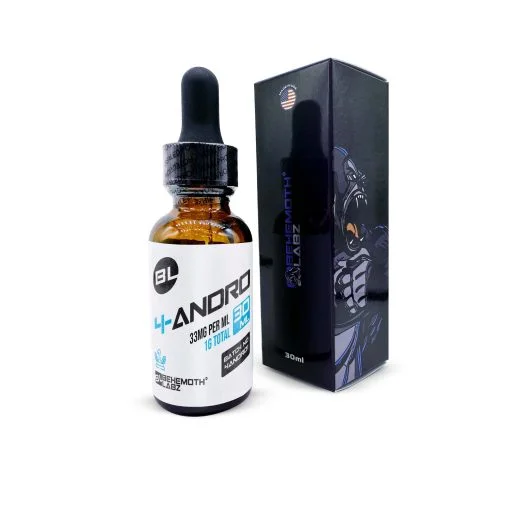Peptides
AOD 9604 vs Tirzepatide: Key Similarities and Differences
AOD 9604 and Tirzepatide are two synthetic peptides. They are under clinical trials for exploring their various potential applications. AOD 9604 has shown promising beneficial patterns, such as metabolic rate and fat loss. In contrast, Tirzepatide peptide has shown an impact on the patterns of insulin secretion in test subjects.
Here is a detailed overview of these two peptides. In this blog, we will discuss in detail what AOD 9604 and Tirzepatide peptides are. What are their key similarities and differences, and which one is the best option? Explore answers to all these questions in this blog!
What is AOD 9604?
AOD stands for Anti Obesity Drug. It is a synthetic peptide and has been formed from a segment of the naturally occurring human growth hormone in the laboratory. After its formation, a tyrosine ring is added (Tyr-HGH 177-191). In preclinical trials on research subjects, this synthetic peptide has only shown promising benefits in affecting patterns linked with fat metabolism.
In other words, this segment avoids exhibiting other potential benefits of growth hormone, such as muscle growth in research subjects during clinical trials. Research studies have further explored its mechanism of action. It shows that the AOD-9604 may work either through lipolysis or lipogenesis. Lipolysis is the process of breaking down fats into smaller molecules. In comparison, lipogenesis is the process of synthesizing fat in test subjects.
What is Tirzepatide?
Tirzepatide is a synthetic peptide currently under clinical trials. It consists of small chains of amino acids connected by peptide bonds. It is also known as a double agonist. The double agonist means it has the potential to influence two receptors in test subjects during clinical trials.
These receptors are GIP (Glucose Inhibitory Peptide or Glucose-Dependent Insulinotropic Peptide) and GLP (Glucagon-Like Peptide-1). These hormone receptors have shown promising results in affecting patterns associated with insulin secretion in research subjects during preclinical trials. In return, Insulin may influence patterns of fat metabolism, diabetes, and weight loss in test subjects during investigational research.
Key Similarities of AOD 9604 and Tirzepatide
Here are a few similarities between AOD 9604 and Tirzepatide peptide:
Synthetic Peptide
Both are synthetic peptides. They consist of small chains of amino acid molecules connected by peptide bonds. Currently, they are under clinical trials for their potential benefits in research trials.
Target Fat Loss
Fat loss is another similarity found in both AOD 9604 and Tirzepatide peptides. In preclinical trials, both of the peptides were observed to have affected the patterns associated with fat cells in research subjects. This fat loss occurred via lipolysis, the breaking down of fat molecules in test subjects into smaller ones.
Influence Metabolic Rate
Research trials have found that metabolic rate, a similar benefit to these peptides. During clinical investigation on test subjects, AOD 9604 has affected metabolic rate through lipolysis and lipogenesis. On the other hand, Tirzepatide peptide has affected the patterns of metabolic rate in subjects during the trials via sugar control and insulin production.
Affect Energy Levels
AOD 9604 and Tirzepatide peptides may also affect energy levels in research subjects during clinical investigations. As shown in preclinical trials, they both have affected the metabolic rate of research models. In return, the metabolic rate has affected the patterns associated with energy levels in subjects in clinical trials.
Key Differences between AOD 9604 and Tirzepatide
Different Mechanism of Action
Both of the peptides have different mechanisms of action in research subjects in clinical trials. AOD 9604 may work through lipolysis (the breakdown of fat molecules) and lipogenesis (inhibiting fat accumulation). In contrast, Tirzepatide peptide may work by affecting the patterns linked with GLP and GIP receptors.
Non-identical Primary Use
They both have different primary uses. For instance, AOD 9604 peptide may be used to observe targeted fat loss patterns. On the other hand, Tirzepatide peptide may be used to influence biomarkers linked with type-2 diabetes or sugar control in research subjects.
Structure Difference
AOD 9604 is formed from a fragment of human growth hormone (176-191). On the other hand, Tirzepatide peptide is formed from combining parts to mimic the patterns of GLP1 and GIP receptors in research participants.
Influence on Appetite
During preclinical trials on non-human test subjects, the Tirzepatide peptide has shown a promising impact on appetite. On the other hand, AOD 9604 peptide has shown no significant impact on the appetite of research participants.
Which One is a Better Option?
The selection of the best peptide depends on various factors. These factors include your research goals, requirements, objectives, and test subjects. If you want to explore lipolysis and type-2 diabetes patterns, then clinical trials suggest Tirzepatide is the best option.
Contrarily, if you want to study targeted weight management patterns in animal models, then AOD 9604 peptide is the best choice for clinical trials.
Legal Status
Neither AOD 9604 nor Tirzepatide is legal. They are not allowed for human consumption, as neither the FDA nor WADA has yet approved them. However, they are allowed to be used for laboratory and research purposes in clinical trials.
Final Thought
AOD 9604 and Tirzepatide are synthetic peptides. During preclinical investigations, they have shown some similar potential benefits. These benefits may include affecting metabolic rate, accelerating fat loss, and impacting energy levels in test subjects. They also have some differences in their structure, mechanism of action, and primary uses. Legally, they are not approved for human consumption. Therefore, they are only used for laboratory and research purposes.
Disclaimer: AOD 9604 and Tirzepatide peptides have not yet been approved by the Food and Drug Administration and the World Anti-Doping Agency. Therefore, they are strictly prohibited for human consumption. However, these compounds may be used for laboratory and research purposes only.
Frequently Asked Questions (FAQs)
How long does it take to see results from AOD 9604 during clinical trials?
Research investigations on animals have suggested 4-6 weeks, an average time, to see visible effects of AOD 9604 peptide. However, this duration may increase or decrease based on several factors.
What is another name for AOD 9604?
Other names for AOD 9604 are AOD 9604, 221231-10-3, UNII-7UP768IP4M, AOD-9604, 7UP768IP4M, AOD9604 acetate, Tyr-somatostatin (177-191), EX-A4625, Somatostatin (177-191), Tyr-AOD-9604.
What is the best place to buy AOD 9604 and Tirzepatide peptides online?
The best place to buy AOD 9604 and Tirzepatide peptides online is BehemothLabz. The products of BehemothLabz are specifically designed for your needs, requirements, and objectives. Furthermore, their prices are also reasonable and within your buying range. Most importantly, they can be shipped nationally and internationally.
Which peptide kills fat cells in research models during trials?
AOD 9604 and Tirzepatide peptides have shown a promising impact on killing fat cells of research subjects in clinical trials. Therefore, these peptides may be used to target the patterns linked with the killing of fat cells in test subjects in trials.
References:
- Cost, Calculate Shipping. “FRAGMENT 176- 191- 5MG SKU PN-FR-001 Rating: 99% of 100.
- Maghinay, Christina, and Mark Smith. “Tirzepatide Cost and Saving Tips.”
- Kathy, V., and Mark Smith. “Starting Tirzepatide or Semaglutide After HCG.”
- OgBonna, Emmanuella, and Danielle Kelvas. “Is Tirzepatide or Semaglutide Better For Weight Loss?”
- Stier, Heike, Evert Vos, and David Kenley. “Safety and Tolerability of the Hexadeca Peptide AOD9604 in Humans.” Journal of Endocrinology and Metabolism 3.1-2 (2013): 7-15.
- Moré, Margaret I., and David Kenley. “Safety and metabolism of AOD9604, a novel nutraceutical ingredient for improved metabolic health.” Journal of Endocrinology and Metabolism 4.3 (2014): 64-77.












